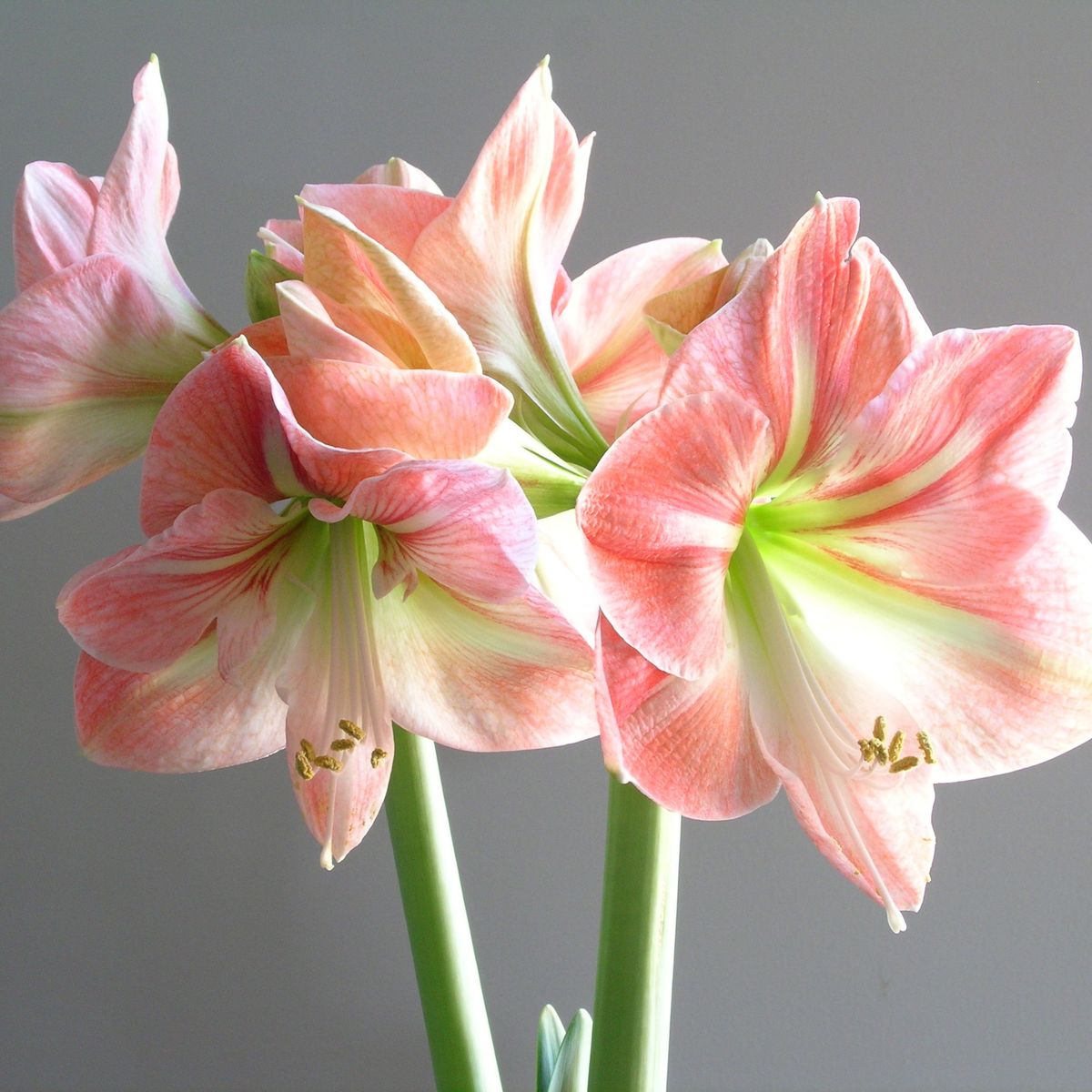Vertical gardening is about growing upwards to save space. It results in fewer plant problems and it’s easier on your back, too! Whether you have a backyard or patio, learn all about the benefits of vertical gardening, which plants are best suited for it, and how to get started with this Vertical Gardening Guide!
The Benefits of Vertical Gardening
Gardening in all three dimensions by using a fence, trellis, or other structure increases the growing area available to gardeners. Here are just a few of the benefits of vertical gardening:
- First and foremost: increased yields. Making maximum use of space means a heartier harvest. Maintaining and harvesting from a vertical planting is also physically easier—plants reach a higher level, so the need to bend and kneel is minimal.
- Furthermore, because foliage and fruit are up off the ground, they are less susceptible to disease. Upward growth provides better air circulation, which means that plants dry faster after watering, thereby reducing the risk of moisture-loving fungi like powdery mildew and rusts taking hold. Symptoms of disease and evidence of pests are more visible and can therefore be addressed sooner rather than later.
- More leaf surface is exposed to the sun when plants aren’t sprawling on the ground, which can result in healthier growth.
While there are many benefits, do note that vertical gardens might need more frequent watering. Wall-mounted planters especially are likely to require regular watering because of the rain shadow cast by the wall. Micro, or drip irrigation systems deliver water efficiently and can be coupled with a timer to automate delivery of water.
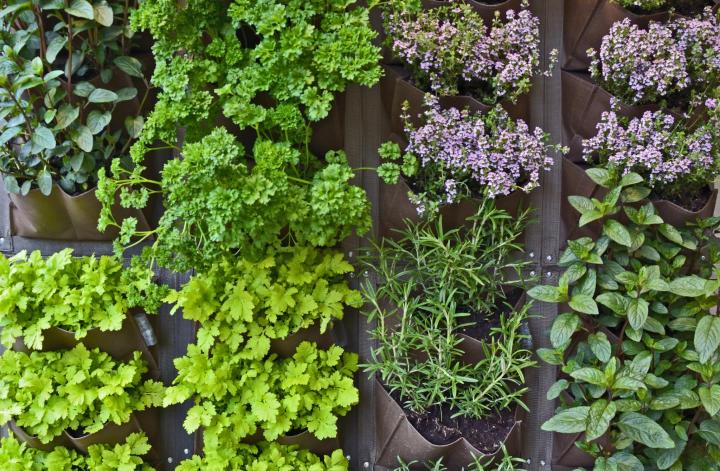
Image: Herbs growing in planter pockets. Credit: GardenbyDesign/Shutterstock.
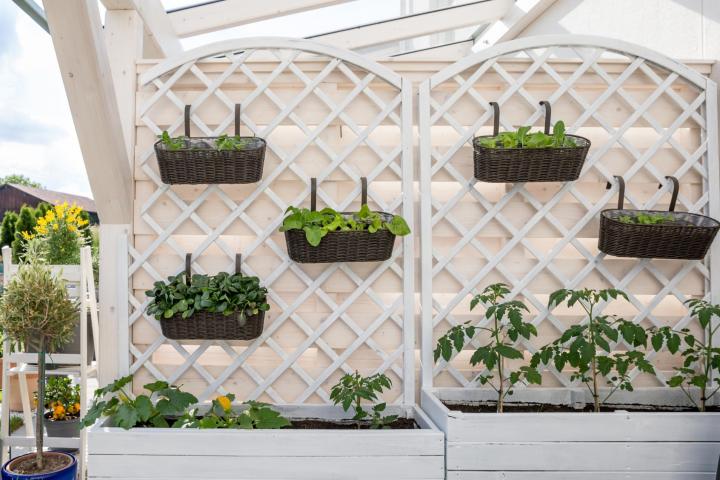
Image: Vegetables growing in baskets on a trellis. Credit: Maximiliane Wagner/Shutterstock
Which Plants Are Best for Vertical Gardening?
Choosing the right crops and cultivars is key. Vining, rambling, and sprawling plants are readily trained to grow up and off the ground, unlike bush-type species. While bush type crops are smaller, they actually take up more horizontal space on the ground. Growing a vining variety lets you grow it up on a trellis, using less horizontal space.
Remember: However they’re grown, vegetables generally need 6 to 8 hours of direct sunlight. In most climates, you will want to make the most of sunshine by picking a surface that faces the midday sun or west to catch the afternoon sun. Any heat absorbed during the day will then be reflected back onto your plants at night, speeding growth and harvest-time.
Our favorite vegetables for vertical growing are pole beans, climbing peas, sweet potatoes, vining tomatoes, and sprawling types of zucchini, cucumber, melon and squash that can be trained up supports.
- Cherry tomato: ‘Sungold’, ‘Black Cherry’, ‘Gardener’s Delight’, ‘Blondkopfchen’
- Cucumber: ‘Burpee Hybrid II’, ‘County Fair 83’, ‘Dasher 11’, ‘Saladin’
- Green bean: ‘Romano Italian’, ‘Meraviglia Venezia’, ‘Gold of Bacau’
- Lima bean: ‘Doctor Martin’, ‘King of the Garden’
- Melon: ‘Delicious 51’, ‘Tigger’, ‘Sleeping Beauty’ (musk melon); ‘White Wonder’, ‘Yellow Doll’ (watermelon)
- Pea: ‘Dual’, ‘Garden Sweet’, ‘Maestro’, ‘Sugar Snap’, ‘Super Sugar Snap’
- Squash: acorn, delicata, yellow summer, zucchini
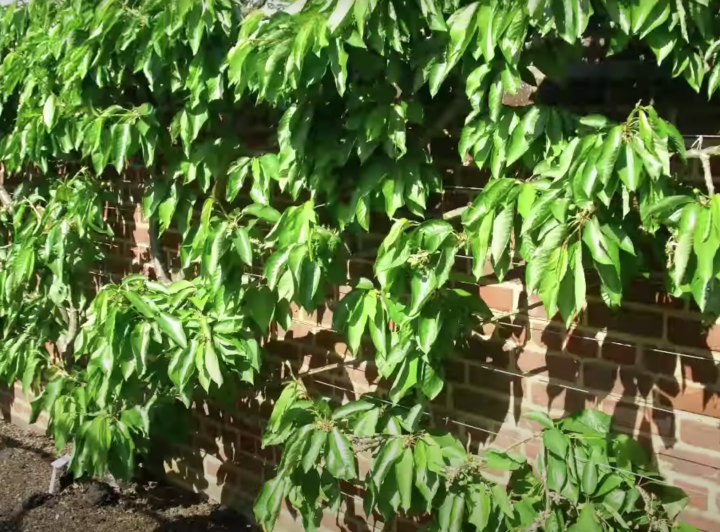
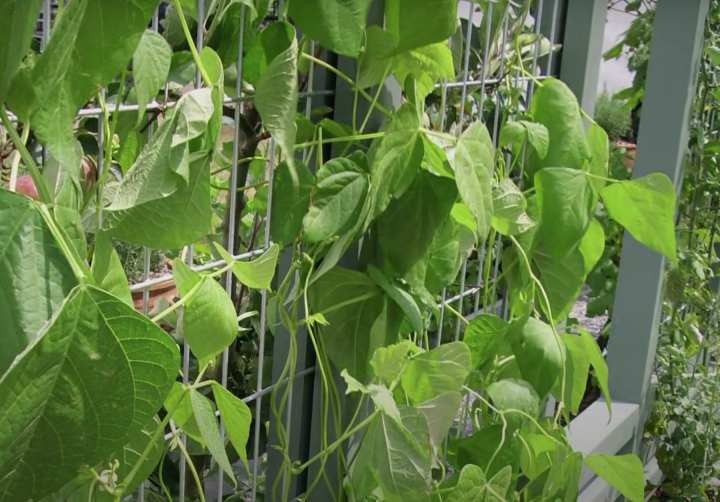
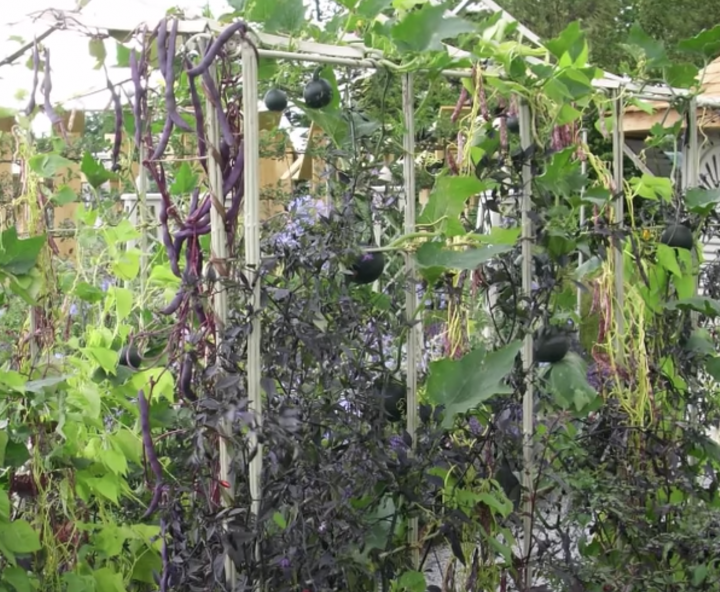
Vertical Garden Supports
When deciding on the type of support to use for your vertically growing plants, think about sun and wind exposure, plant size, and maintenance requirements.
There are many types of supports from which to choose. In addition to trellises, tripods, arches, and pergolas, there are gazebos, wire cages, netting, bamboo poles, and more. Some gardeners have even invented ways to use 2-liter plastic soda bottles, gutters, and PVC pipe to great effect.
Try to match the structure with the plant’s characteristics.
- For example, leafy plants with tendrils, such as pole beans and sweet peas, do well climbing up trellises – either bought or homemade from woody pruning.
- More substantial plants, such as grapevines, benefit from sturdier structures—perhaps an arch or pergola. Keep in mind that a structure must be able to accommodate a mature plant’s weight, and it should be well anchored to keep it from toppling over.
- Fruit trees such as apples, pears, and cherries can be trained into a vertical plane either against a wall or fence or along free-standing wire supports. These trees may be trained to produce single-stemmed cordons, fan shapes, parallel-branched espaliers, or any manner of other fence-hugging forms. Use sturdy, horizontal wires strained between fence posts to create the necessary supports for wall-trained fruit.

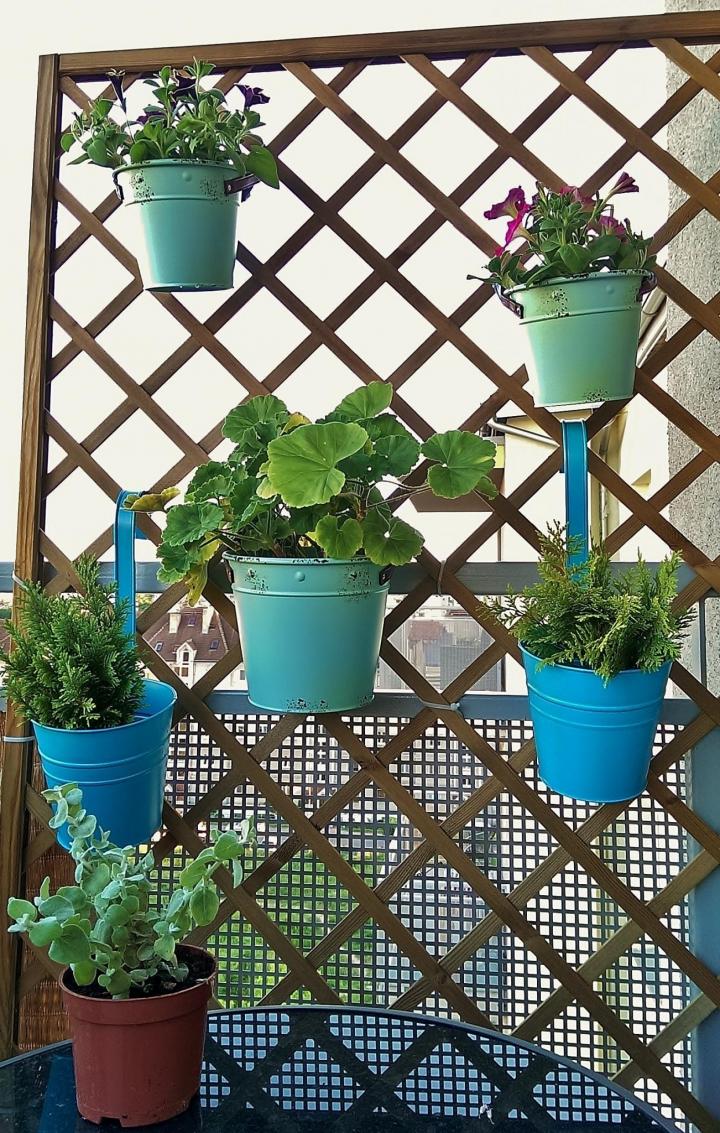
Image: Pots on a vertical trellis. This could be stained for an extra touch! Credit: Chacha/Shutterstock.
While you can buy pre-made structures, there are a lot of DIY solutions such as livestock fence panels which are 8- or 16-foot long panels come in a variety of heights and can be installed by using a few metal posts. Even an old colorfully-painted window frame could be used.
Old wooden pallets are widely available and turning them into vertical planters is a great way to reuse them. Check they are safe for reuse by looking for the pallet stamp. Stamps should display the IPPC logo and/or the letters EPAL, plus HT or DB, which means the wood hasn’t been chemically treated.
- If building with a pallet, just sandpaper down the rough edges, patches, and sharp corners on the pallet. If the packet doesn’t have a backing, nail the MDF (medium-density fiberboard) to the back of the pallet using 12-inch nails.
- Lay the pallet flat and fill it with potting soil. Then, while the pallet is still flat, start planting. Leave space between each plant. Water in. Leave pallet flat for two weeks for before standing it vertically.
See more about building trellises and supports for climbing vegetables.
Planters, Pockets, and Baskets
Be creative with wall-mounted pots, planting pockets, tower planters, and hanging baskets. Fill them with herbs, salads and strawberries, then watch a blank space take on a whole new life! A couple tips:
- Use containers that will accommodate adult-size plants—growth will be stunted if pots are too small.
- Any walls or fences must be strong enough to hold the considerable weight of the plant as well as damp potting soil if you’re hanging plants off the structure.
You can make your own wall-mounted planters from recycled food tins or bottles that have been lined with plastic, sturdy bags, or parallel rows of window boxes or tubs.
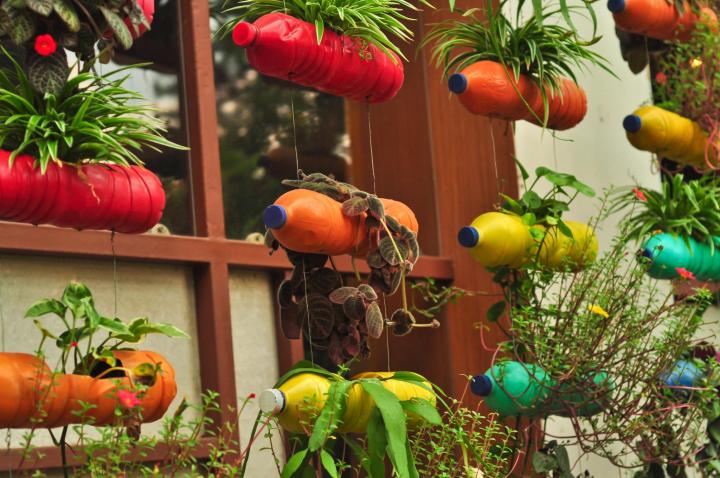
Image: Recycled plastic bottles used as planters. Credit: LuckyV/Shutterstock
How to Build a Vertical Garden
In this video, we demonstrate some simple structures you can easily build yourself to provide the support these plants will need.
3 Awesome Ways to Grow Vertically
One easy way to make a vertical garden is to buy a trellis panel and secure it to the wall to support a range of pots planted with herbs, vegetables, and flowers. See this video on how to build it—plus, two other ways to grow up!
Indoor Vertical Gardening
Indoor vertical herb gardens are also a great way to grow fresh ingredients in the kitchen without crowding the counters.
- Use hose clamps to fasten small pots or mason jars to an old cutting board and then hang the board on a sturdy hook in a well-lit area.
- Add about an inch of pebbles to the bottom of each container and then fill with potting soil and herbs such as basil, chives, mint, oregano, and sage.
Alternatively, you can attach a few gutters to the wall or suspend hanging planters from the ceiling.
There you have it … the ABCs of vertical gardening. Now try your hand at growing up—the sky’s the limit!
To learn more about vertical gardening, learn how to make a teepee for your climbing beans.






